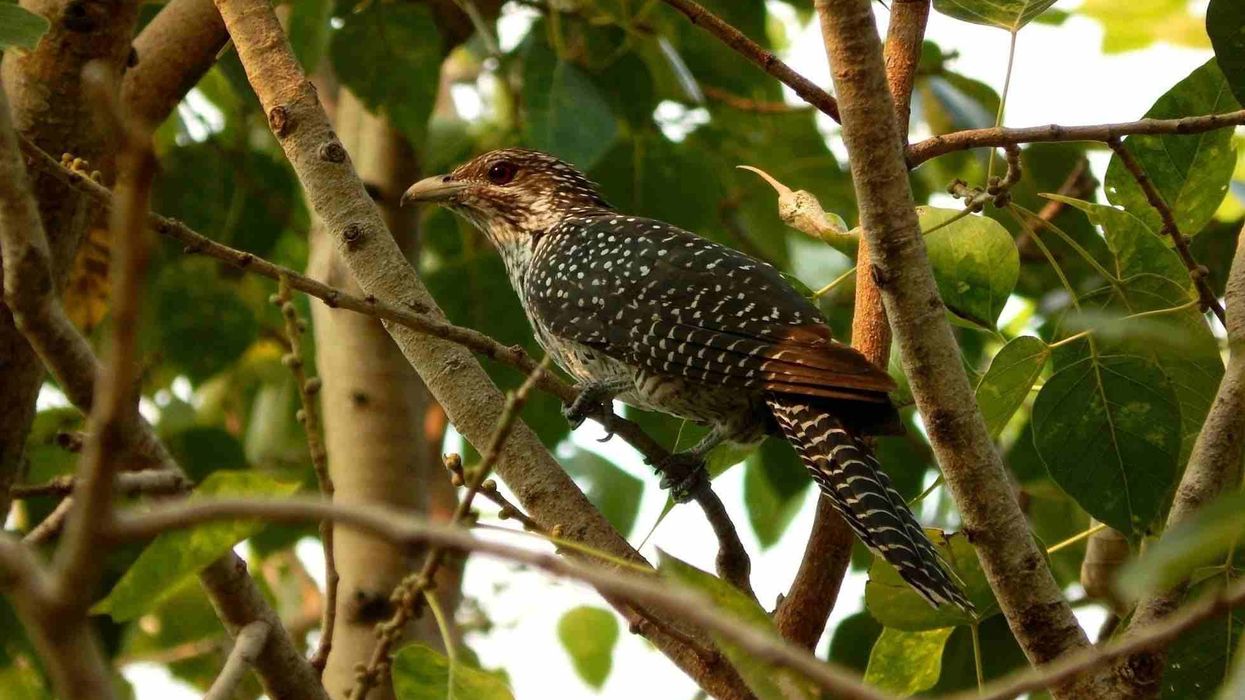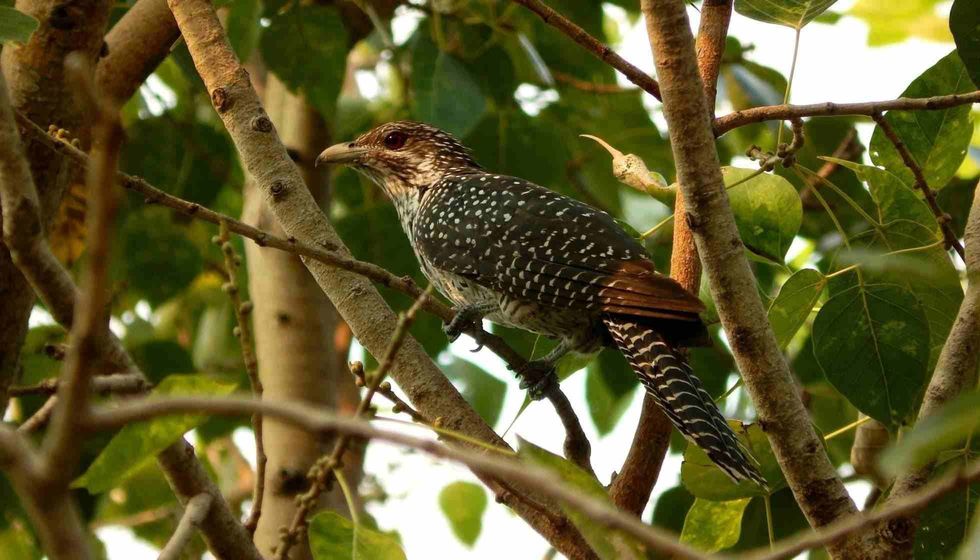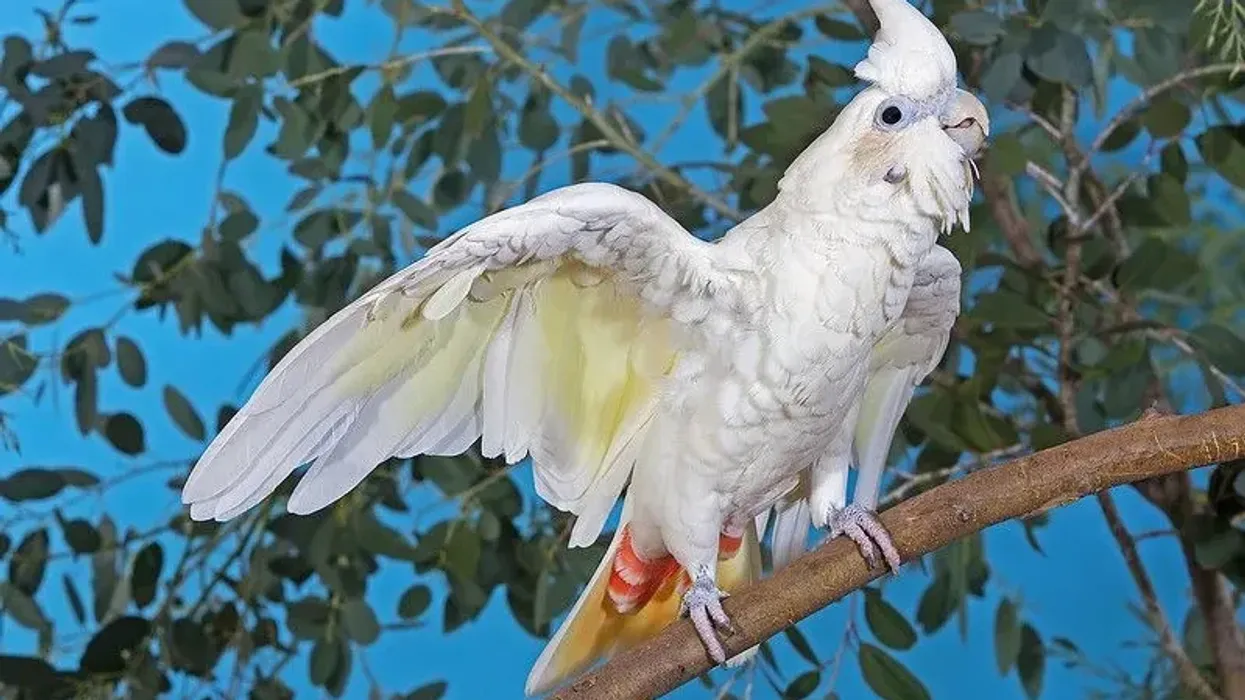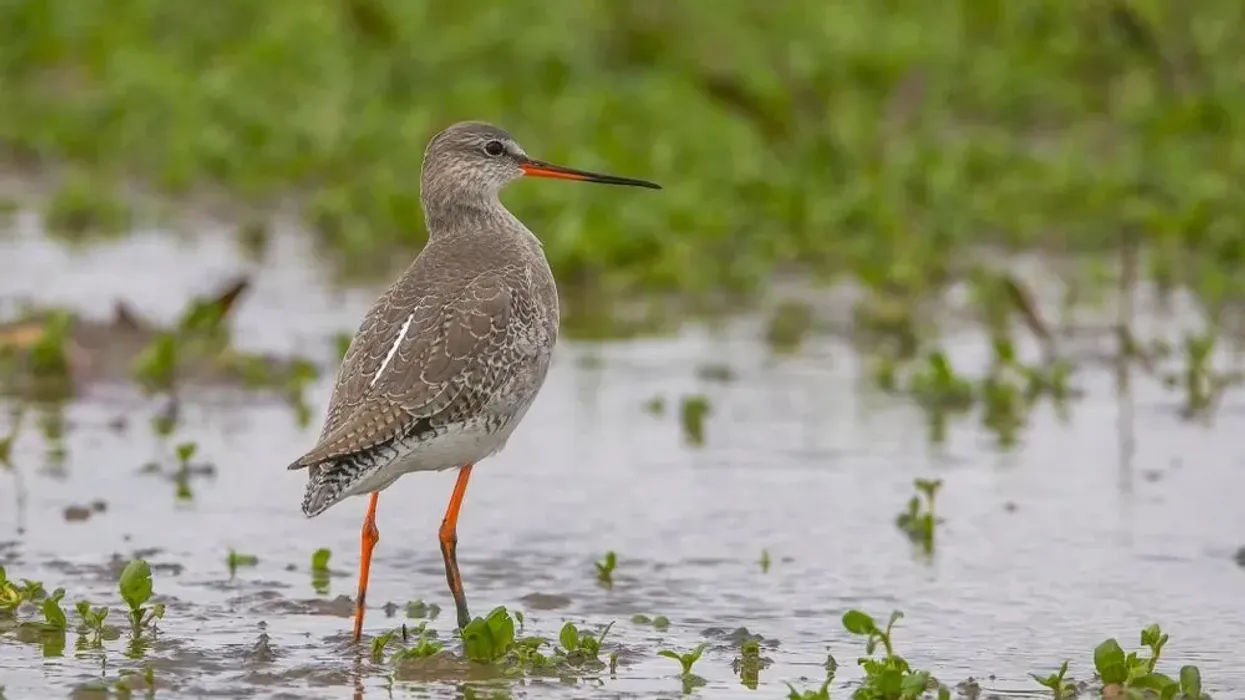The great spotted cuckoo (Clamator glandarius) is a large-sized bird and represents a classic example of oblique brood parasitism. It is one of the most popular birds of the world that inhabits the rocky hillsides of dry savannas, woodlands, scrubs, and other dry cultivation lands.
It has a long tail with olive-brown plumage. This plumage exhibits fascinating white spots all over and their neck region is creamy white in color. The head has a short and pretty crest that is silvery gray in color.
Their legs are bluish-gray. The population of these birds ranges from southern Europe throughout Africa.
This species of cuckoos preys on different types of insects like caterpillars, moths, grasshoppers, termites, and also small lizards. They are seen to remove the hairs of the caterpillar before swallowing.
These birds can be extremely noisy, especially during their breeding season, and are also migratory in nature. These cuckoos do not build their own nest and parasitize other bird's nests for hatching and incubating their eggs.
The chick is also fed by the host parents. Magpies are their bird of choice, but these cuckoos are also seen to parasitize the nest of various other corvids, like crows and ravens to brood.
To know more about these clever cuckoos, keep on reading. If you liked reading this article, then do check out our articles on the black-billed cuckoo and the cuckoo.
Great Spotted Cuckoo Interesting Facts
What type of animal is a great spotted cuckoo?
The great spotted cuckoo is a bird of the Cuculidae family.
What class of animal does a great spotted cuckoo belong to?
The great spotted cuckoo (Clamator glandarius) belongs to the class Aves.
How many great spotted cuckoos are there in the world?
Cuckoos of this species are known to have a stable population. There are currently 3,000,000-10,499,999 mature individuals of this bird living in this world.
Where does a great spotted cuckoo live?
The population range of the Clamator glandarius (great spotted cuckoo) is endemic to southern Europe and Africa. The habitat distribution of this cuckoo species ranges from East Africa to Mediterranean Africa. They also range from Asia Minor to different parts of Mediterranean Europe.
What is a great spotted cuckoo's habitat?
The great spotted cuckoo (Clamator glandarius) inhabits dry Acacia savannas, woodlands, rocky hillsides, scrubs, and dry agricultural lands.
Who does great spotted cuckoo live with?
These cuckoos are often seen to travel in pairs and also in groups of three to four birds. However, this species of birds is also spotted singly on various treetops.
How long does a great spotted cuckoo live?
Although the exact lifespan of a great spotted cuckoo (Clamator glandarius) is not yet recorded, the common cuckoo is known to live for about six years.
How do they reproduce?
This species of cuckoo reproduces by the female laying an average of 15 eggs in one season. During their breeding season, which starts in early summer, courtship flight displays are seen among the adult pairs.
The males during their flight feed insects to the adult females, particularly caterpillars, during courtship. Acceptance of the food by the female marks the beginning of copulation.
Copulation lasts for about two minutes. The cuckoo bird is known to parasitize the nest of other birds and prefers to lay the eggs in a nest located on large trees.
The adults search in trees for the nest of magpies and various other corvids like the pied crow. Both parents take the initiative to find the nest of the host.
Once their target is set, the males distract the host by flying conspicuously around its nest and fluttering their wings. The male cuckoo also calls out in varying tones in its flight.
The female takes up this opportunity to finally lay their eggs in the nest of the host. It also tends to harm the host's eggs in order to make space for its own young ones.
The host bird is responsible to incubate the eggs as well as raise the young ones. The incubation period lasts for up to 15 days.
The cuckoo's eggs are known to hatch much earlier than the host's eggs. The young ones of the cuckoo also develop much faster than the host's chick, and often, the host's young chicks succumb to starvation and eventually cannot survive anymore.
What is their conservation status?
The International Union for Conservation of Nature or the IUCN Red List has listed the Clamator glandarius (great spotted cuckoo) as a species of Least Concern. Though their population trend is stable as of now, the increased level of deforestation by humans and poor agricultural practices could pose a threat to this species.
Great Spotted Cuckoo Fun Facts
What does a great spotted cuckoo look like?
This species of cuckoo is one of the most notorious birds of the world, for its loud and shrill calls and intelligence. They have a long tail that is dark brown in color, with white markings.
Their small crest is silvery gray and the neck region is creamy white. Their body has long and wide wings that are black in color and the tail feathers have a glossy finish. Their bill is bluish-gray in color that gradually fades in the lower part of the mandible, along with small nostrils.
The legs of the secuckoos are tinted gray and their iris is brown with a red eye-ring. Their chicks are raised by a magpie or other corvid adults.
How cute are they?
This bird species is conspicuous and very cute due to their ingeniousness and assorted loud calls, like a black cuckoo.
How do they communicate?
These cuckoos communicate by their loud and assorted calls that are heard from great distances. These calls vary according to their activities. They also display courtship acts that are quite fascinating.
How big is a great spotted cuckoo?
This species of cuckoo, belonging to the Cuculiformes order, is about 13.7-15.7 in (35-40 cm) in length and is way bigger than the hummingbird, with a length of 3-5 in (7.5-13 cm).
How fast can a great spotted cuckoo run?
These cuckoos can fly extremely fast, although the exact speed of this cuckoo is not known. However, the roadrunner cuckoo, another species of the Cuculiformes order, is known to reach a speed of a maximum of 26 mph (42 kph).
How much does a great spotted cuckoo weigh?
This species of the cuckoo from Europe and Africa weighs about 0.3-0.4 lb (140-170 g).
What are the male and female names of the species?
There are no specific names given to male and female cuckoo birds.
What would you call a baby great spotted cuckoo?
A baby cuckoo is called a chick.
What do they eat?
This cuckoo's diet is carnivorous in nature. It feeds on small worms on the ground and insects like spiders. It also feeds on small frogs and reptiles like lizards. Caterpillars are a huge part of their diet.
Are they dangerous?
This species of cuckoo does not cause any harm to humans but does affect the population of magpies and other corvids by destroying their eggs. Magpie chicks suffer from starvation and die.
Would they make a good pet?
These cuckoos are wild and highly active in nature. These notorious birds of the world are also known for their loud calls. In most countries, it is illegal to pet cuckoos and they would not make a good pet.
Did you know...
These cuckoos are known to migrate from Africa to Europe, marking the beginning of spring.
Clockmakers have imitated the male cuckoo's distinct call, which is somewhat heard as 'kooh-kooh'.
Although these cuckoos are fast flyers, they are clumsy walkers and forags on the ground mostly.
These cuckoos are extremely territorial in nature and often engage themselves in dwells with other birds in which they are seen to rip up each other's feathers.
Are cuckoos corvids?
Cuckoos belonging to the Cuculidae family are not corvids.
Why do cuckoos call?
Cuckoo calls are used to attract female partners, to let them know that magpies and other corvids have started nesting. They also call aggressively to defend their territories.
Here at Kidadl, we have carefully created lots of interesting family-friendly animal facts for everyone to discover! For more relatable content, check out these copper pheasant facts and three-toed woodpecker facts for kids.
You can even occupy yourself at home by coloring in one of our free printable cuckoo bird coloring pages.
Main image by Frank Vassen from Brussels, Belgium
Second image by Zeynel Cebeci









